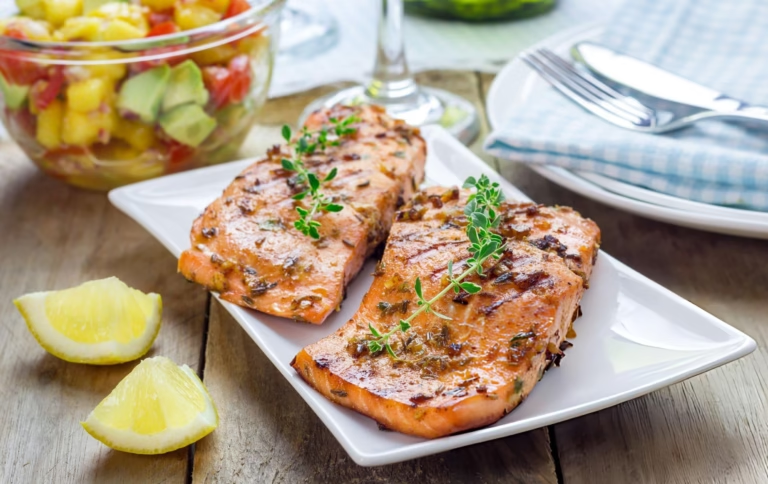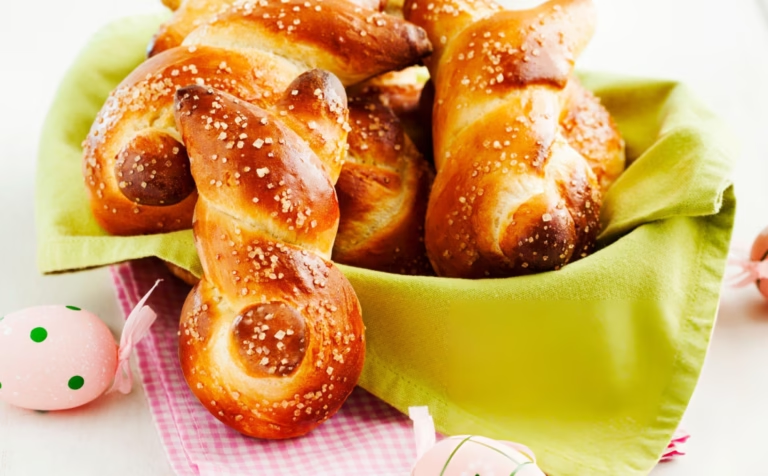There’s something magical about a well-made chicken casserole. It’s the kind of dish that warms the soul, fills the kitchen with irresistible aromas, and brings everyone to the dinner table with eager anticipation. Whether you’re a busy parent looking for an easy weeknight meal, a home cook prepping for a potluck, or someone craving a nostalgic comfort dish, this ultimate chicken casserole recipe is your answer.
Why Chicken Casserole is a Go-To Comfort Food
Before we get into the recipe, let’s talk about why this dish is so beloved:
Budget-Friendly – Uses affordable pantry staples and leftover chicken.
Feeds a Crowd – Perfect for family dinners, potlucks, or holiday gatherings.
Customizable – Easily adapts to dietary preferences (gluten-free, keto, etc.).
Comfort in Every Bite – Creamy, hearty, and satisfying.
Easy Cleanup – One-dish meal = fewer pots and pans!
Ingredients Breakdown (With Substitutions)
To make the best chicken casserole, you’ll need these key components:
1. The Chicken
3 cups cooked chicken (shredded or diced)
Best options: Rotisserie chicken (for convenience), leftover baked chicken, or poached chicken breast.
Vegetarian swap: Chickpeas or tofu for a meat-free version.
2. The Pasta (or Base)
2 cups uncooked pasta (elbow macaroni, penne, or egg noodles work well)
Gluten-free option: Use GF pasta or cauliflower rice.
Low-carb swap: Zucchini noodles or spaghetti squash.
3. The Creamy Sauce
1 can (10.5 oz) cream of chicken soup (or mushroom/celery for variation)
1 cup sour cream (or Greek yogurt for a lighter, tangier taste)
1 cup chicken broth (for moisture and depth of flavor)
4. The Cheese (Because Everything’s Better With Cheese!)
1 ½ cups shredded cheddar cheese (divided)
Other great cheeses: Monterey Jack, Gruyère, or Pepper Jack for a kick.
5. The Veggies (For Nutrition & Texture)
1 cup mixed vegetables (peas, carrots, broccoli, or bell peppers)
Fresh or frozen: Both work! Just thaw frozen veggies before mixing.
6. The Seasonings (Flavor Boosters)
1 tsp garlic powder
1 tsp onion powder
½ tsp smoked paprika (adds a subtle depth)
Salt & black pepper to taste
7. The Crispy Topping (Optional but Highly Recommended!)
1 cup crushed Ritz crackers, breadcrumbs, or cornflakes
2 tbsp melted butter (helps crispiness)
¼ cup grated Parmesan cheese (for extra umami)
Step-by-Step Cooking Instructions (With Pro Tips)
Step 1: Preheat & Prep
Preheat oven to 375°F (190°C).
Grease a 9×13-inch baking dish to prevent sticking.
Step 2: Cook the Pasta
Boil pasta in salted water, but undercook by 1-2 minutes (it’ll finish cooking in the oven).
Drain and set aside.
Pro Tip: Rinse pasta with cold water to stop cooking if prepping ahead.
Step 3: Mix the Casserole Filling
In a large bowl, combine:
– Cooked chicken
– Cooked pasta
– Cream of chicken soup
– Sour cream
– Chicken broth
1 cup of shredded cheddar cheese
– Veggies
– Seasonings
Pro Tip: For extra creaminess, add ½ cup cream cheese or a splash of heavy cream.
Step 4: Assemble & Bake
Transfer mixture to the baking dish.
Sprinkle remaining ½ cup cheddar cheese on top.
Mix crushed crackers, melted butter, and Parmesan—then sprinkle evenly over the casserole.
Bake uncovered 25-30 minutes until bubbly and golden.
Pro Tip: For extra crispiness, broil for 1-2 minutes at the end (watch closely!).
Step 5: Rest & Serve
Let it sit 5 minutes before serving (helps it set).
Garnish with fresh parsley or green onions.
Expert Tips for the Best Results
Use Rotisserie Chicken – Saves time and adds great flavor.
Don’t Overcook Pasta – It will soften more while baking.
Add More Veggies – Spinach, mushrooms, or corn work well.
Make It Spicy – Add diced jalapeños or cayenne pepper.
Crispy Topping Hack – Panko breadcrumbs add extra crunch.
Make-Ahead & Storage Guide
Meal Prep Friendly!
Refrigerate (Unbaked) – Assemble, cover, and store for up to 24 hours before baking.
Freeze (Unbaked) – Wrap tightly and freeze for up to 3 months. Thaw overnight before baking.
Storing Leftovers
Fridge: Keep in an airtight container for 3-4 days.
Freezer: Freeze portions for up to 2 months.
Reheating Tips
Oven: 350°F (175°C) for 15-20 mins (best for crispiness).
Microwave: Cover and heat in 1-minute intervals (stir in between).
Nutritional Insights (Per Serving)
| Nutrient | Approx. Amount |
|---|---|
| Calories | 350-400 kcal |
| Protein | 25g |
| Carbs | 30g |
| Fat | 15g |
| Fiber | 3g |
Healthier Swaps:
Use low-fat cheese & Greek yogurt for fewer calories.
Add more veggies to increase fiber.
Chicken Casserole Recipe
This ultimate chicken casserole recipe is a versatile, foolproof dish that never fails to impress. Whether you stick to the classic version or experiment with fun twists, it’s guaranteed to become a family favorite.
Now it’s your turn! Have you tried this recipe? What variations did you love? Share in the comments below! And if you found this guide helpful, pin it for later or share it with a friend.
Happy cooking!
Chicken Casserole Recipe Easy (FAQs)
A chicken casserole is a comforting baked dish that typically combines cooked chicken with a starchy base like pasta, rice, or potatoes, along with vegetables, a creamy or saucy binder, and often cheese. The chicken can be shredded or diced, using leftovers or rotisserie chicken for convenience. The creamy element usually comes from ingredients like cream of chicken or mushroom soup, sour cream, or a homemade cheese sauce, while common vegetables include peas, carrots, broccoli, or corn for added texture and nutrition. Seasonings like garlic powder, onion powder, paprika, salt, and pepper enhance the flavor, and a crispy topping—such as breadcrumbs, crushed crackers, or fried onions—adds the perfect finishing touch. This versatile dish can be adapted to suit different tastes, making it a family favorite for its hearty, satisfying nature.
A well-structured casserole consists of five key components that work together to create a balanced and delicious dish. First, the protein—such as chicken, beef, turkey, or beans—provides the main substance. Second, a starch like pasta, rice, potatoes, or bread acts as the base, absorbing flavors and adding heartiness. Third, vegetables like carrots, peas, or broccoli contribute texture, color, and nutrients. Fourth, a binder or sauce, which can be creamy (like cheese sauce or condensed soup) or broth-based, holds everything together and keeps the casserole moist. Finally, a topping—often something crispy like breadcrumbs, crushed crackers, or melted cheese—adds contrast in texture and enhances the overall flavor. These five elements ensure a satisfying, well-rounded meal that’s both comforting and easy to customize.
While both chicken stew and chicken casserole feature tender chicken and vegetables, they differ in preparation, texture, and presentation. Chicken stew is typically simmered on the stovetop or in a slow cooker with a brothy, liquid-based sauce, resulting in a soup-like consistency that’s often served in bowls. In contrast, a chicken casserole is baked in the oven, featuring a thicker, creamier sauce (often with cheese or condensed soup) and sometimes a starchy base like pasta or rice. Casseroles are known for their crispy or golden topping, such as breadcrumbs or melted cheese, and are served sliced or scooped from a baking dish. While stews are more liquid and spoonable, casseroles are denser and more structured, making them ideal for a hearty, family-style meal.
Making a simple chicken casserole is straightforward and requires just a few basic steps. Start by preheating your oven to 375°F (190°C) and greasing a 9x13-inch baking dish. Cook your choice of pasta (like egg noodles or penne) until al dente, then drain and set aside. In a large bowl, combine shredded or diced cooked chicken (rotisserie chicken works great), the cooked pasta, a can of cream of chicken soup, a cup of sour cream or Greek yogurt, and your favorite vegetables (such as peas or carrots). Season with garlic powder, onion powder, salt, and pepper, then mix well. Transfer the mixture to the baking dish, top with shredded cheese, and finish with a layer of crushed crackers or breadcrumbs mixed with melted butter for crunch. Bake for 25–30 minutes until bubbly and golden. Let it rest for a few minutes before serving for the best texture.
The term "casserole" originates from the French word "casse," meaning a deep cooking pot or pan. Historically, casseroles referred to both the dish and the meal cooked inside it, typically consisting of layered ingredients like meat, vegetables, and grains baked together. The concept became especially popular in mid-20th-century America, where convenience foods like canned soups and frozen vegetables made casseroles an easy, budget-friendly meal for families. Today, the word broadly describes any baked dish that combines protein, starch, vegetables, and sauce in a single pan. The casserole’s appeal lies in its simplicity, versatility, and ability to feed a crowd with minimal effort, making it a timeless comfort food.
Cooking chicken for a casserole can be done in several ways, depending on your preference and time constraints. The easiest method is using pre-cooked rotisserie chicken, which saves time and adds flavor. Alternatively, you can boil chicken breasts or thighs in seasoned broth for 15–20 minutes until fully cooked, then shred or dice the meat. Baking is another great option—season the chicken with salt, pepper, and herbs, then roast at 375°F (190°C) for 25–30 minutes until the internal temperature reaches 165°F (74°C). For a quicker stovetop method, sauté diced chicken in a bit of oil until no longer pink. Regardless of the method, ensure the chicken is fully cooked before adding it to the casserole to avoid food safety issues and to keep the dish moist and tender.
The best casserole dish depends on your cooking needs and preferences. Glass dishes, like Pyrex, are a popular choice because they heat evenly, resist staining, and can go from oven to table for serving. Ceramic dishes are excellent for retaining heat and often come in decorative styles, making them ideal for serving at gatherings. Metal pans, such as stainless steel or aluminum, heat up quickly and are lightweight but may not brown food as evenly as glass or ceramic. Cast iron is perfect for achieving a crispy crust but is heavier and requires seasoning. In terms of size, a 9x13-inch dish is ideal for family-sized meals, while an 8x8-inch dish works well for smaller portions. Choose an oven-safe, deep dish to prevent spills and allow for proper layering of ingredients.


